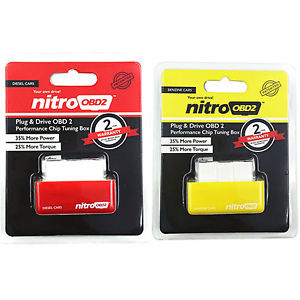This is a review and analysis of the popular NitroOBD and EcoOBD OBD chips recently popping up across the net. Whether it is on eBay, Amazon, or another online retailer, even including Walmart online, these OBD plugs have been a popular recent addition to the OBD tuning market. If you are looking for a Nitro OBD review, this is for you! What are they and what do they do? Let’s take a look:
Company Profile
The manufacturer is a company called ‘Nicolay’, according to the packaging. However, we were unable to find a website or real company under this name. Perhaps it is a generic brand name?
Cost
The cost averages from the $3USD range, up to $25USD, depending on the source, eBay, aliexpress, amazon, etc. The cost is a very suspicious factor to us, as no genuine tuning product can be manufactured this cheaply.
Product Appearance
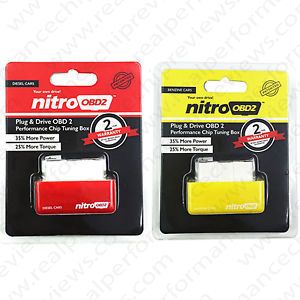
The OBD tuner modules come in four different colors, and they claim each is for a different type of engine:
YELLOW Case – Performance Boost For Benzine (Gasoline) Engines
RED Case – Performance Boost For Diesel Engines
GREEN Case – Fuel Saving for Benzine (Gasoline) Engines
BLUE Case – Fuel Saving for Diesel Engines
We will examine the most common Yellow module first:
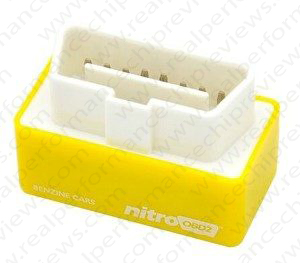
The product instructions state the following:
- NitroOBD2 Chip Tuning Box for Diesel and Benzine Cars, make your vehicle Lower Fuel and Lower Emission, 1. Pull the Car Key out from the ignition. 2. Find OBD2 connector(*) in your car and Plug in NitroOBD2 Chip Tuning Box
- 2. 3. Insert the key into the ignition and twist the key to the first stage. (Do not start the car) 4. Press the reset buttom for about 5 sec. After releasing the buttom, just wait for a while about 30-54 sec. (NitroOBD2 Chip Tuning Box will communicate and establish connection with ECU) 5. Start up the engine. 6. NitroOBD2 Chip Tuning Box will recognize your vehicle and your driving habits, after around 200 km/150 miles driving and thus NitroOBD2 Performance Chip Tuning Box will adjust itself to match your car perfectly for more fuel saving.
The instructions claim to have vehicle maps onboard to allow the device to optimize the vehicle performance when connected to the OBD port.
Internal Analysis
We purchased a few of these modules from different sources, and ended up with a few different circuit boards inside:
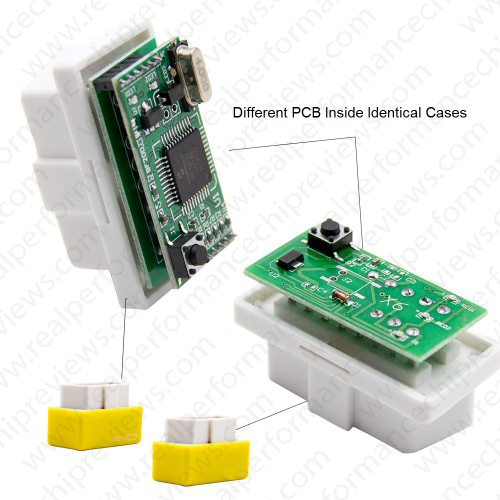
Aliexpress even shows three different versions of circuit boards:
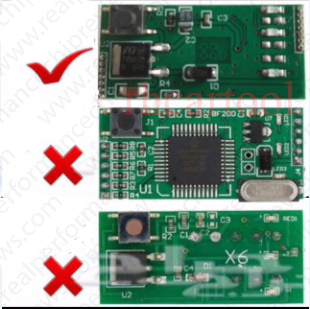
They show a checkmark beside the first one, while the others have an ‘X’ beside them. While they say the first is best, the middle board is actually the original version, and was seen in the earliest NitroOBD modules. Why make the first one appear to be the best? Answer: Simple – it is the one they are tying to sell you!
The first circuit board is built around a PIC16F59 IC:
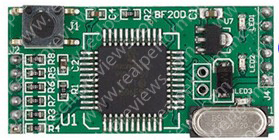
Right away we see a problem here, because if one pulls the datasheet for the PIC16F59 IC, we can see from the manufacturer, Microchip, that this chip has a maximum program memory size of 3KB:
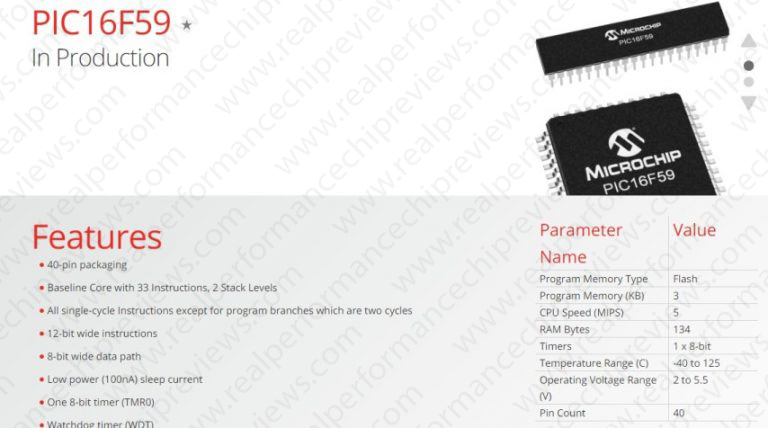
From several searches, we verified that ECU maps for a vehicle will be at least 20KB or larger PER MAP! This is way too large for the PIC16F59 IC to contain. So, if this is the case, there are no genuine vehicle maps onboard the module. What can be stored in such a small 3KB sized space then? We have our own suspicion.
The second circuit board is built around a hidden IC on the back of the PCB:
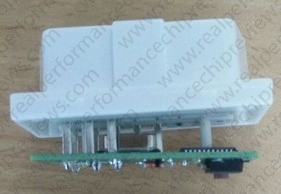
After deeper inspection, we see that this chip is a STM8S003F3, a value line IC manufactured by ST. The datasheet shows this IC has only 8KB of program memory, also too small for genuine vehicle maps:
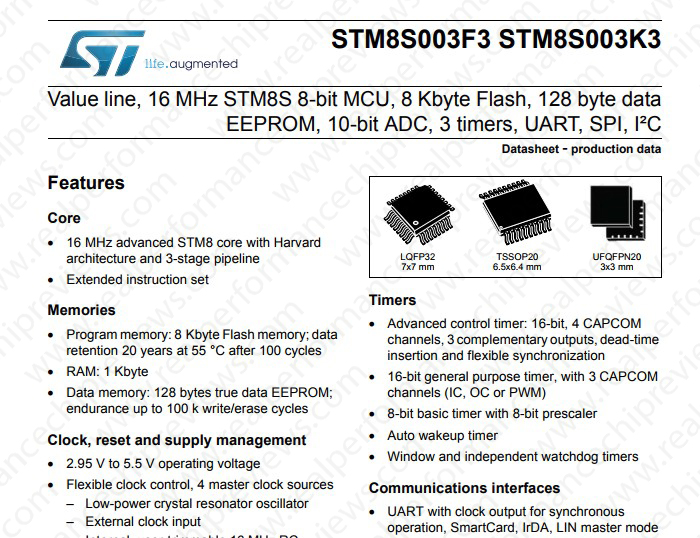
Operation
We connected the Nitro OBD module to our 2012 BMW 530i 3.0L L6 as shown in the instruction sheet and lights began to blink:
We followed the instructions and drove at least 200+ miles to give it the benefit of the doubt, and…… nothing. No power increase, no mileage increase. We did, however, see a neat light show!
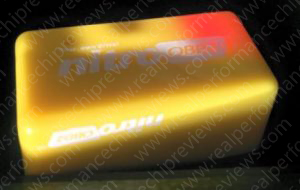
Analysis
It is clear from our analysis so far that the NitroOBD module does not have the physical capacity to hold real vehicle ECU maps. 3KB of memory IS large enough for a light blinker program however, and we believe this is exactly what it truly is – a light blinker in different colored cases. The circuit appears to monitor the pins from the OBD port and the small microprocessor blinks the lights when activity is detected, giving the appearance of the chip’s operation. While some users online claim to have seen small gains in pickup or fuel economy, we believe this is due to either the placebo effect or other vehicle / environmental factors. While we did not get any error codes set by our NitroOBD module, others claim it does set error codes, and if so, this is a major red flag.
The second issue is the claim that it fits SEVERAL different vehicles – this is not possible, even for one vehicle, with such a small 3KB program capacity.
The third issue is that the same circuit is used in all different colored cases we opened – red, yellow, green, blue – it did not matter. We found the same boards as in the yellow version, and, the same ICs.
Conclusion
From our research and review, it is our opinion that the NitroOBD / EcoOBD OBD module performance chip is a scam. It may also cause ECU damage, as reported by some users on the net, so we suggest avoiding it at all costs. It is a nice light show at best, damaging at worst. You want to pass on this one!
| Average Horsepower (HP) Gain: | |
| Average Torque (TQ) Gain: | |
| Average Miles Per Gallon (MPG) Gain: | |
| Company Communication: | |
| Processing Speed: | |
| Total Rating |



